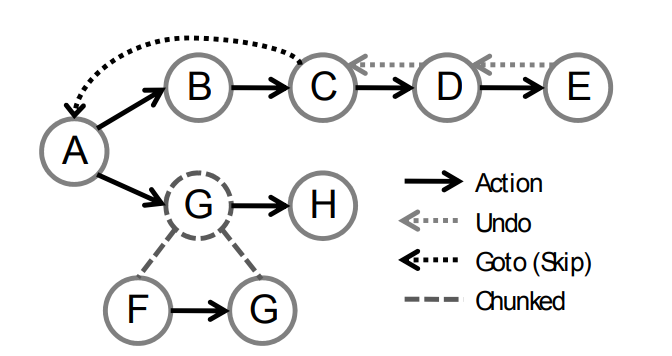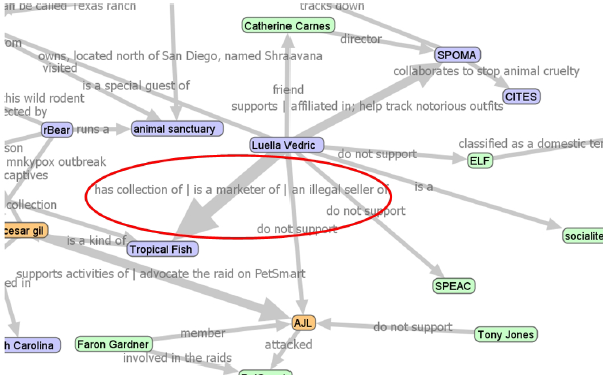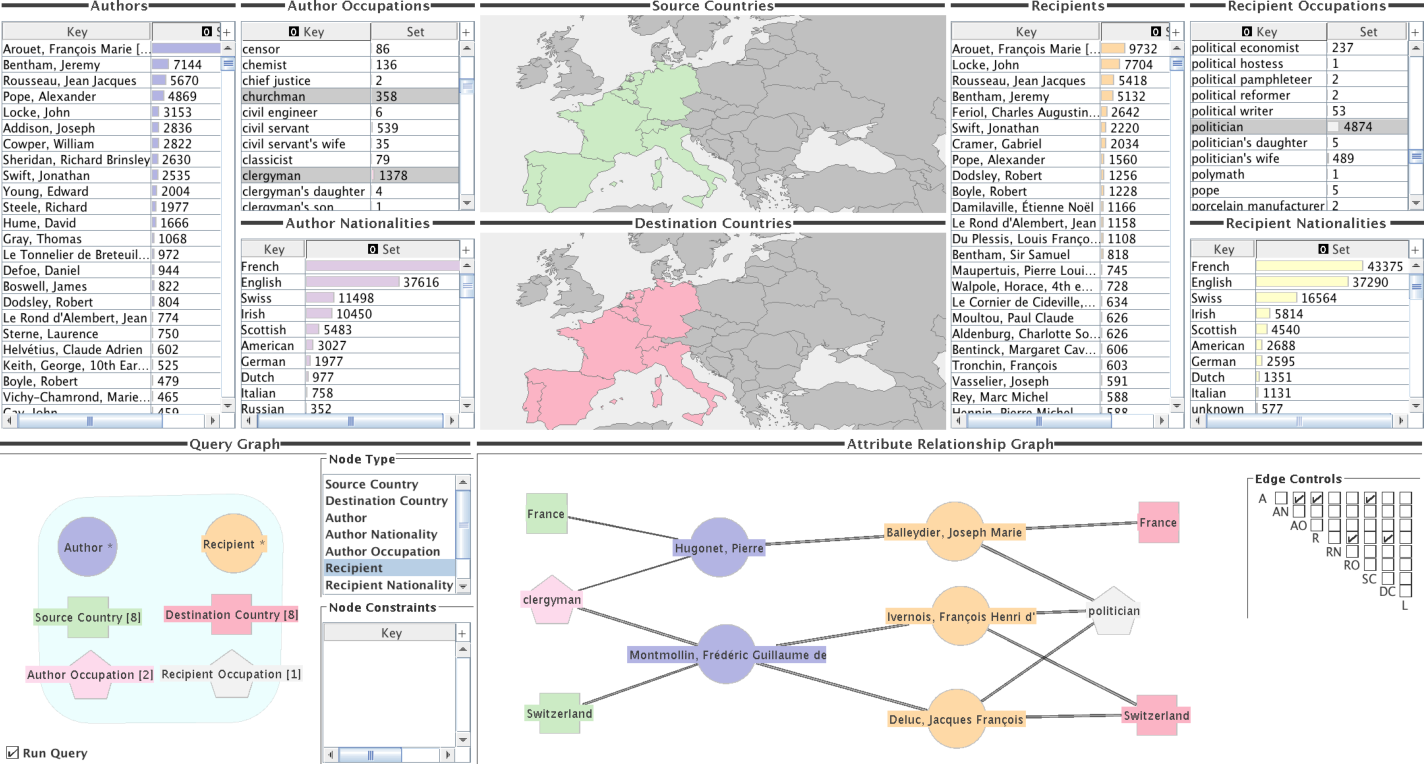Since the purpose of using a visualization is to explore data, discover patterns and relations, and eventually build knowledge, many visualization systems encode the user’s interactions as knowledge graphs, concept graphs, or history graphs. In most cases, the nodes in these graphs represent a data item (e.g., a document, a location, an entity), an abstract concept (e.g., user annotations), or a visualization state (e.g., user histories). Edges then represent connections or relations between these entities. In this section, we identify publications that that use a Graph-based encoding approach and group them into two categories: Entity and Concept Graphs and History Graphs.



